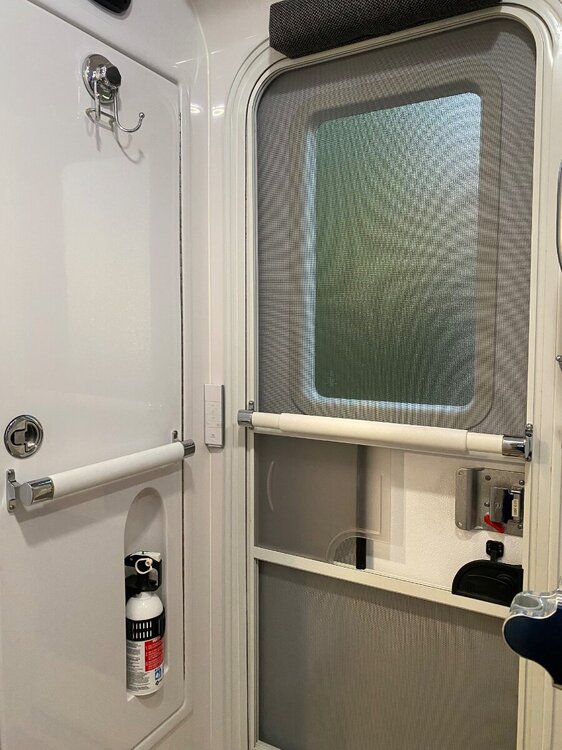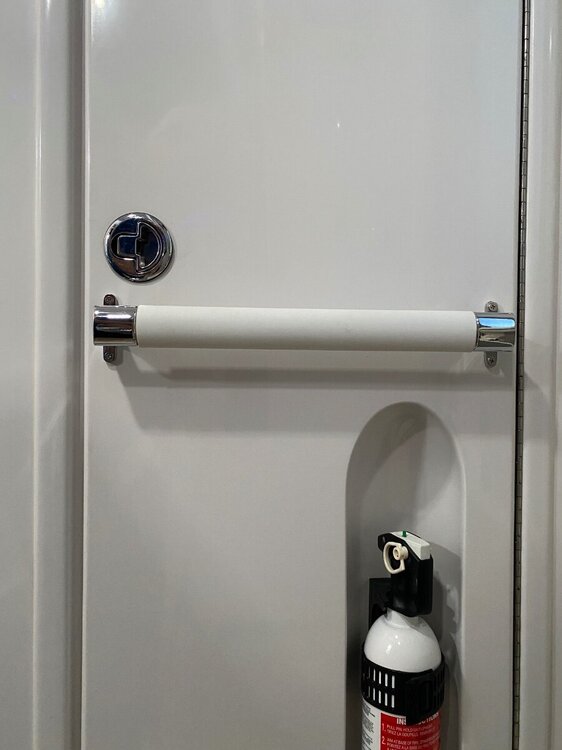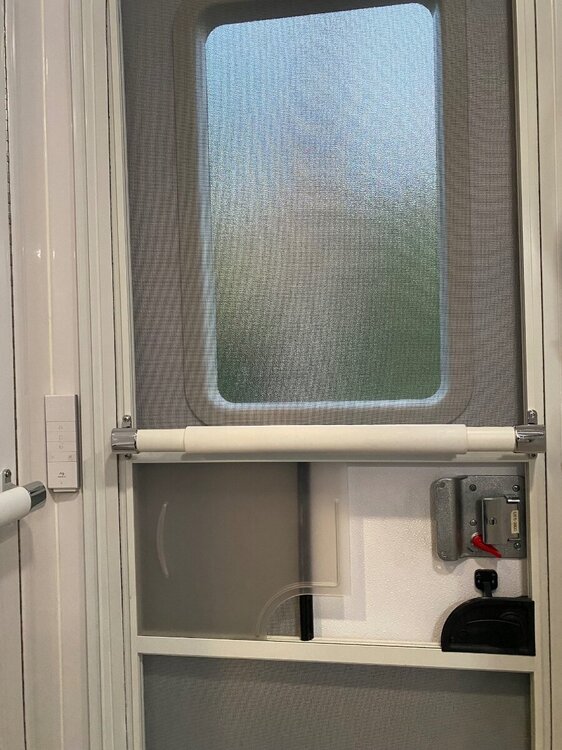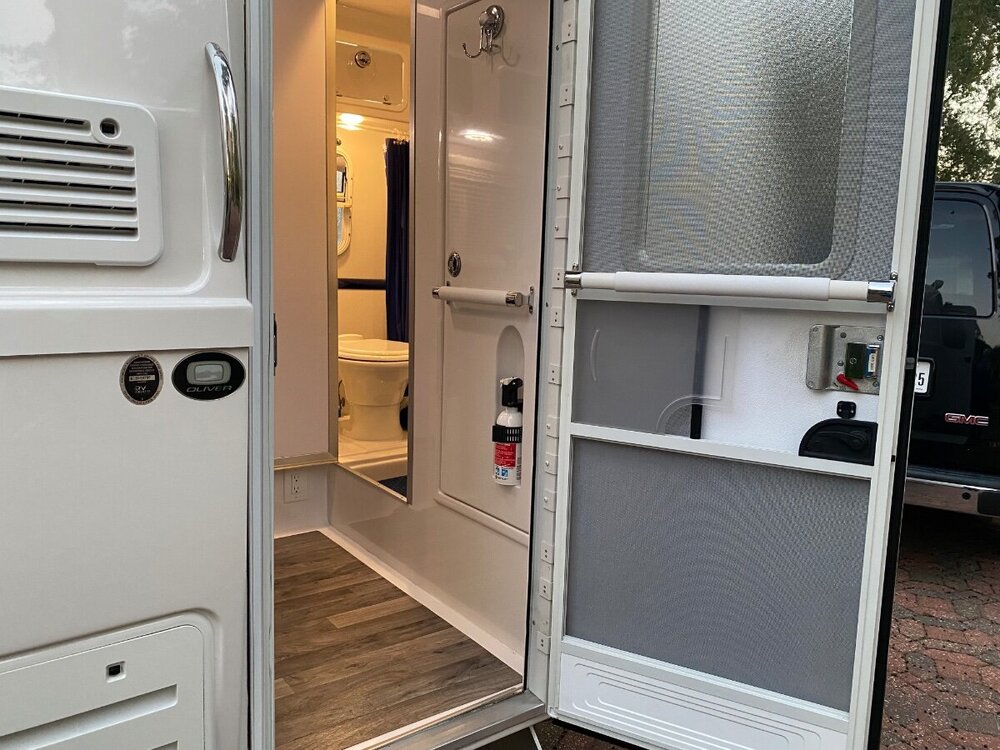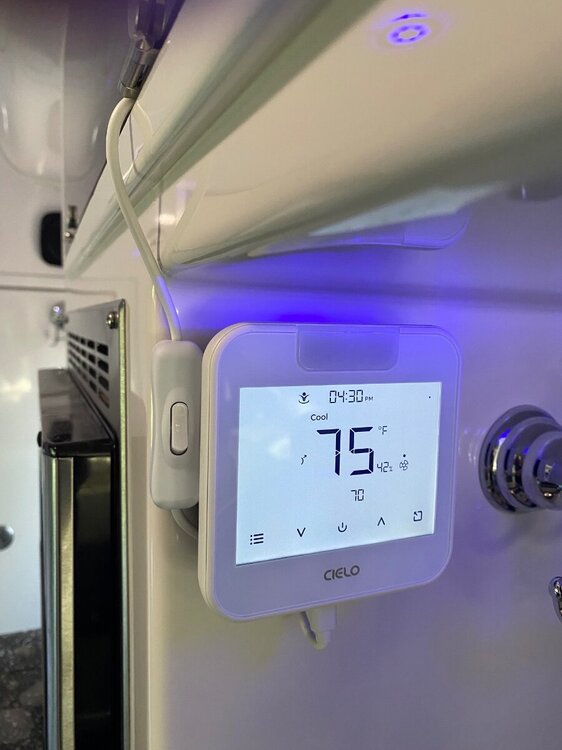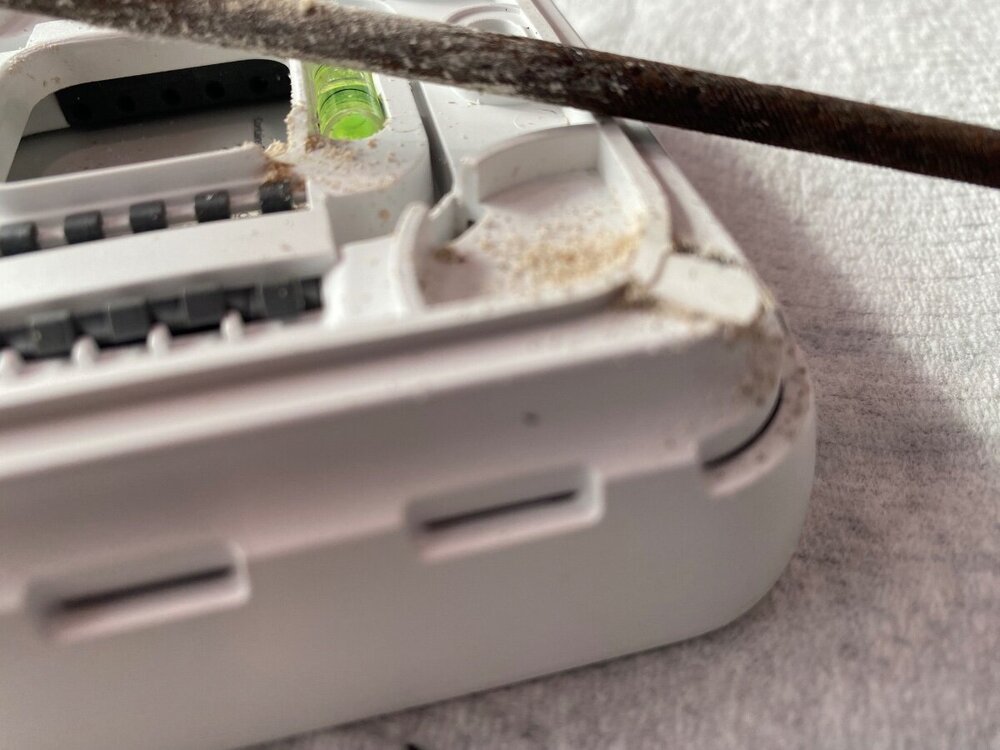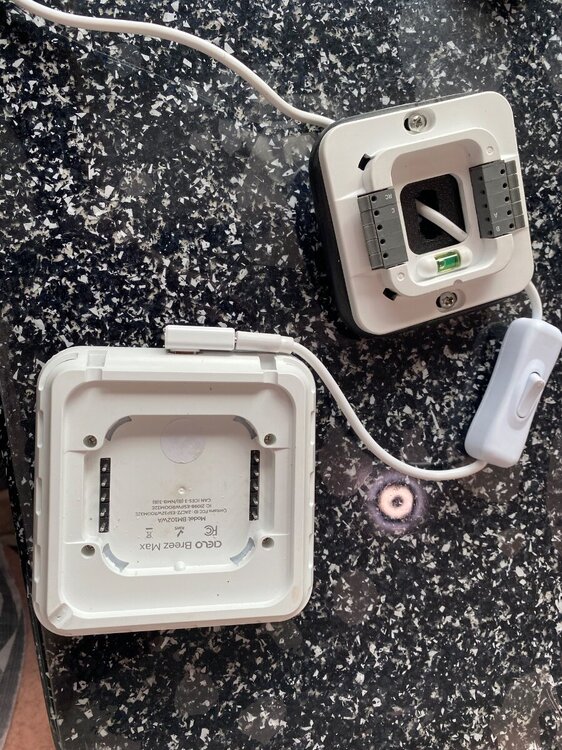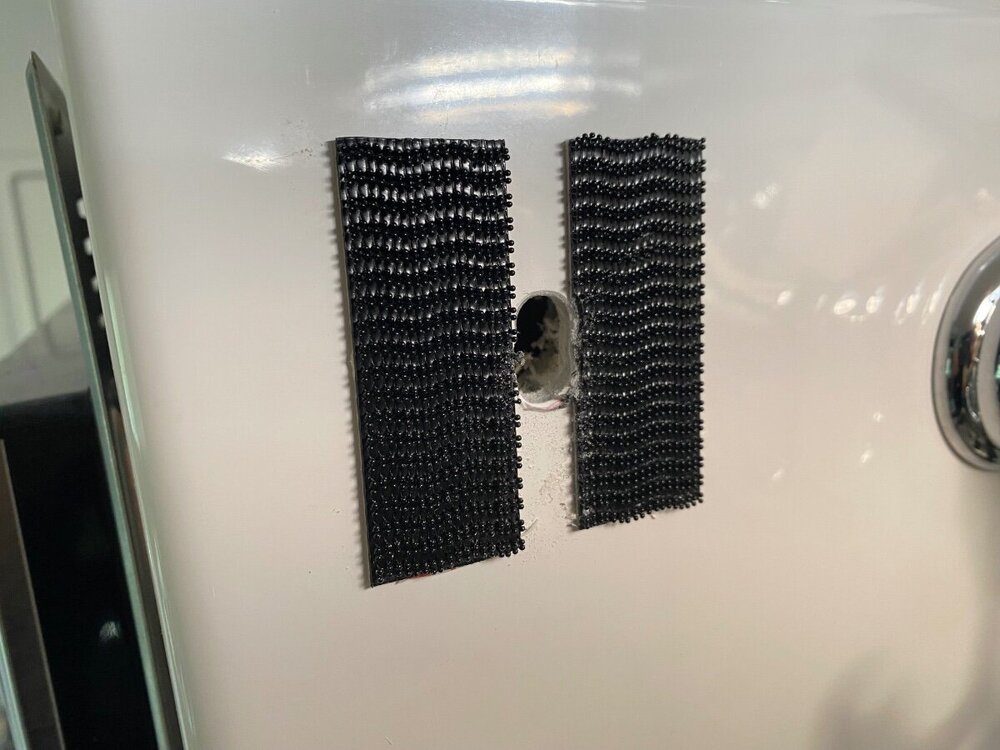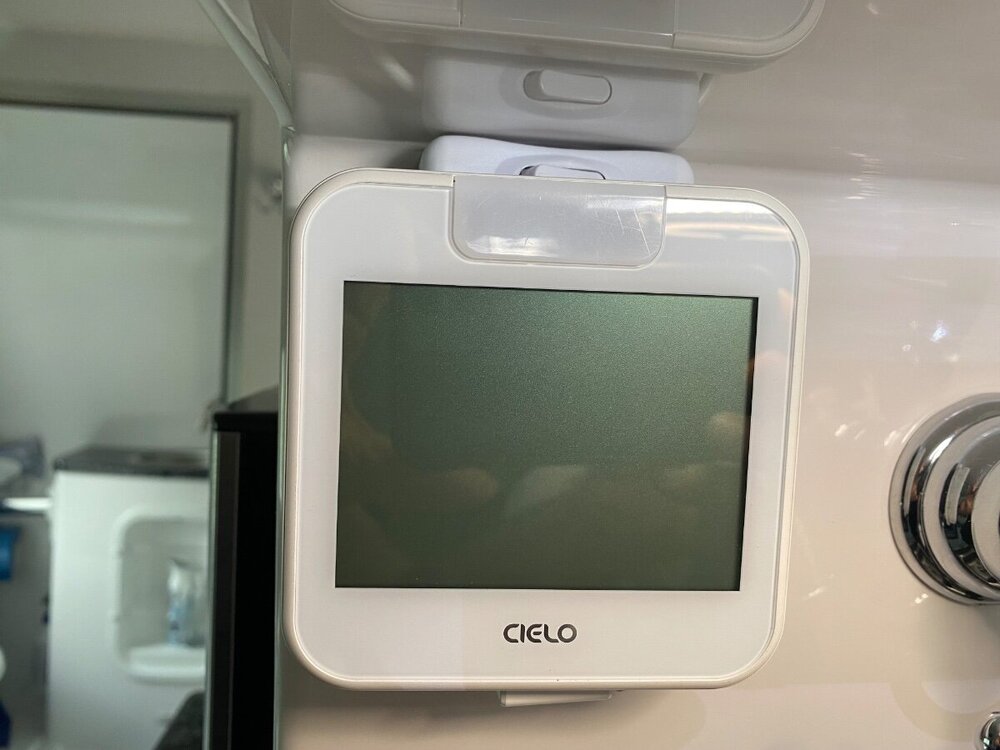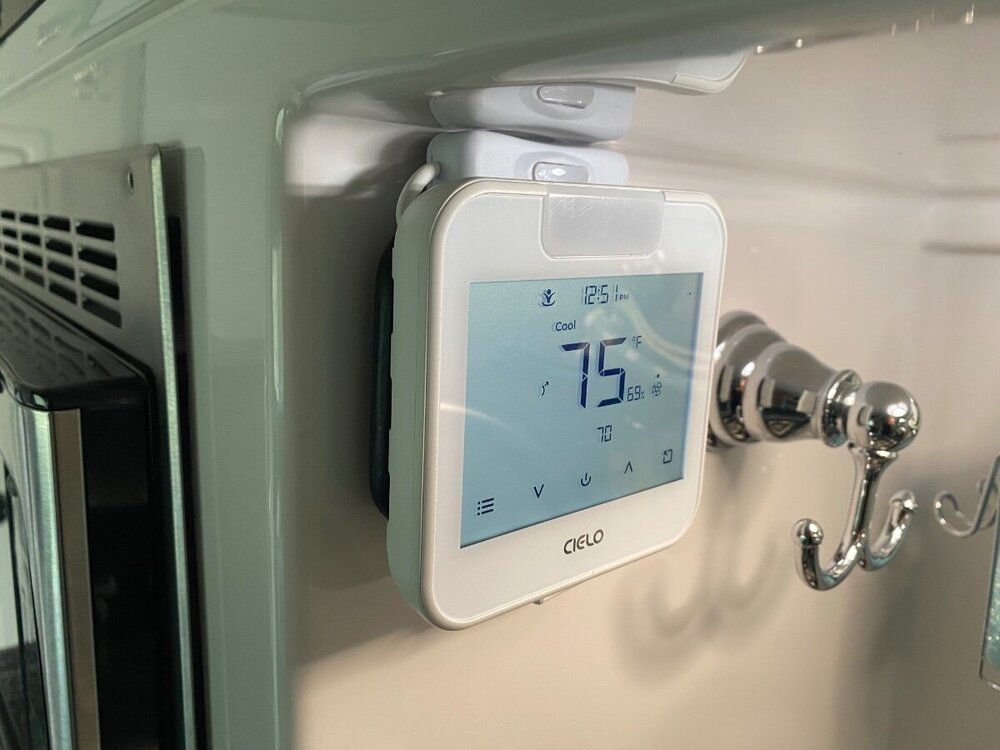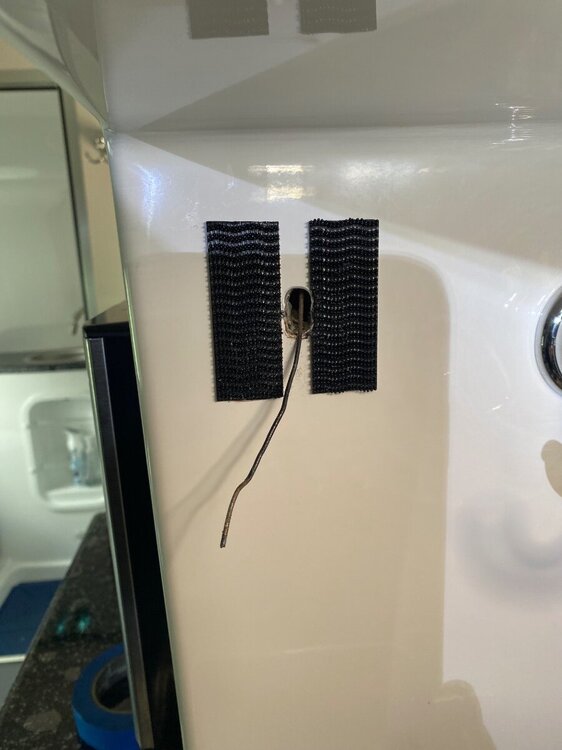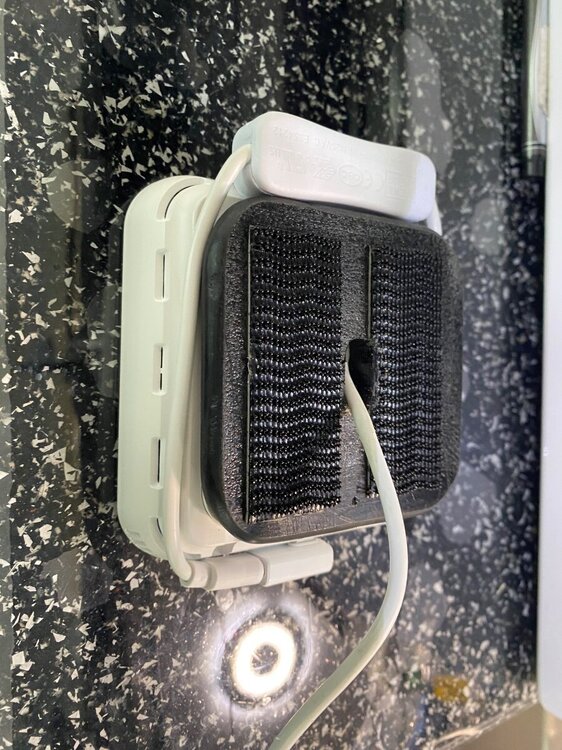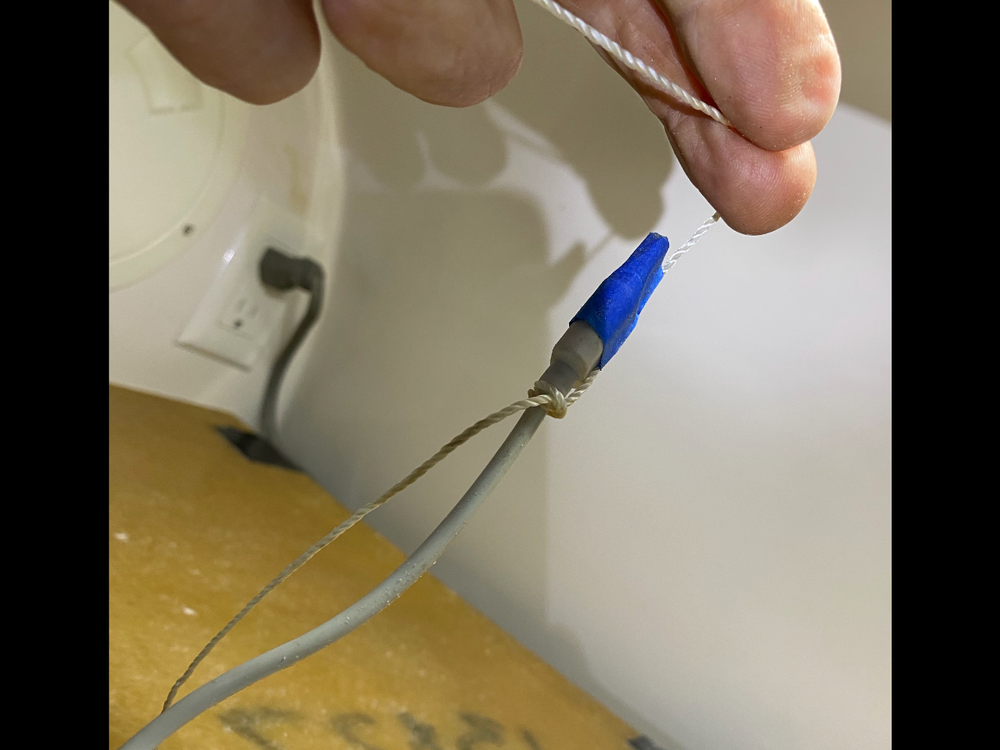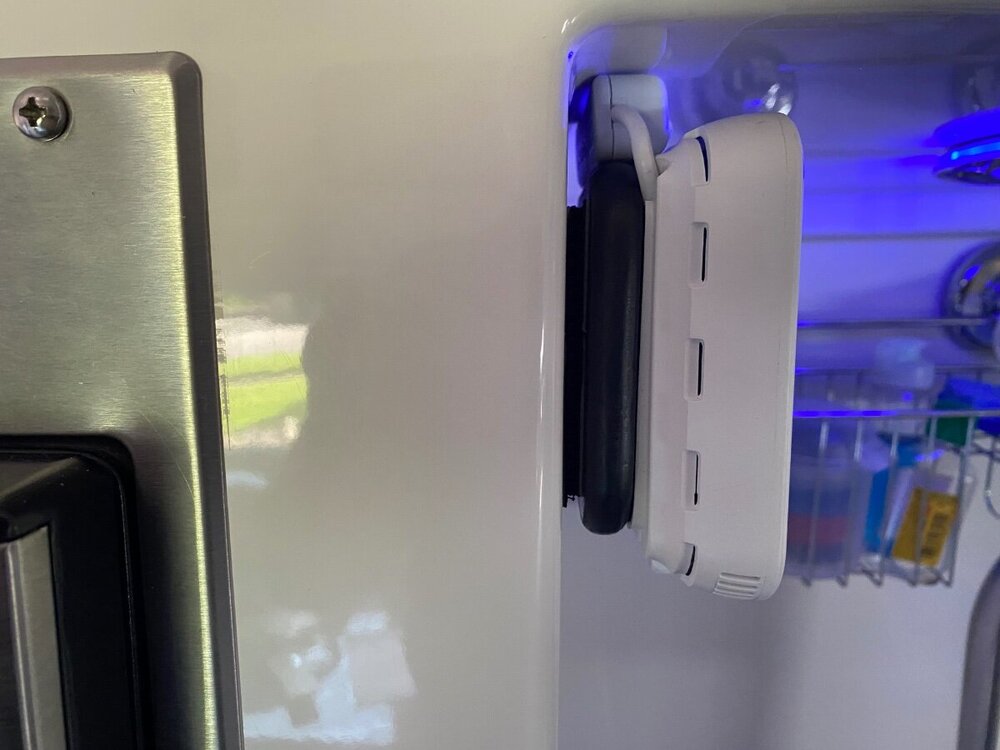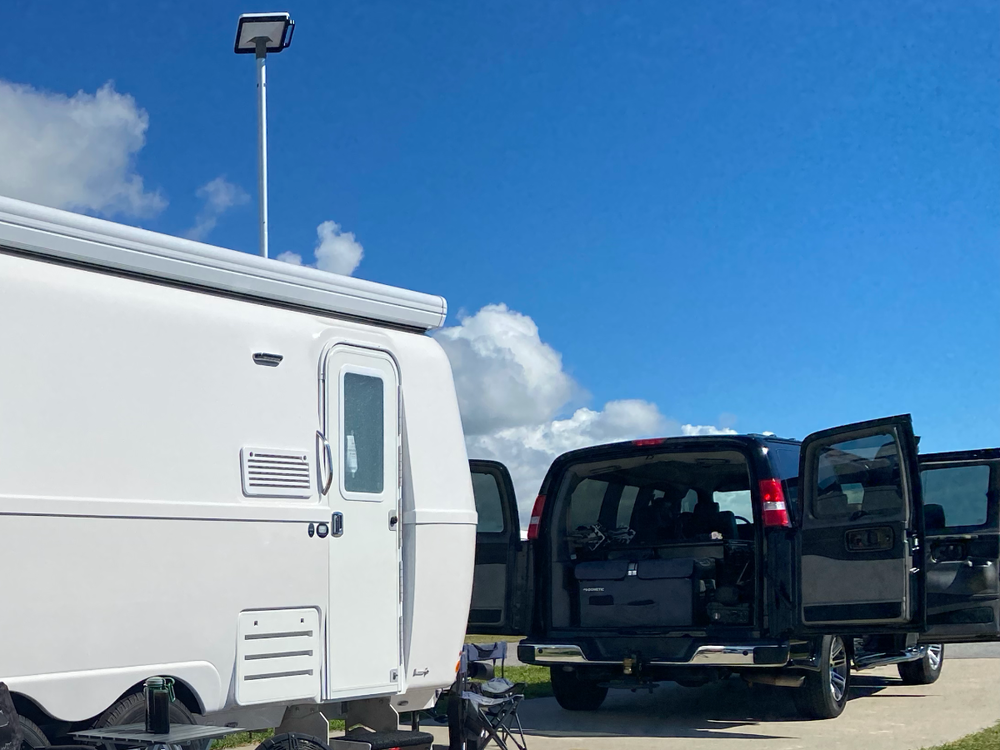-
Posts
1,120 -
Joined
-
Last visited
-
Days Won
35
Everything posted by Ronbrink
-
First of all, credit to the Oliver owner that shared the installation of these on his screen door, great idea and product recommendation! I finally got around to adding a push bar to our screen door for ease in exiting and closing, and also resolved an ingress problem, as well. Although both installations offer support, my decision to mount one on the closet door as a grab handle when entering to help pull one’s self up and in, proved especially beneficial! Also, each can be used as a towel or clothing rack. Respective modifications were made for custom fitment, here’s a look at the final outcome:
-

Norcold Fridge Hinge Parts - Availability Issue?
Ronbrink replied to DunnYet's topic in Mechanical & Technical Tips
Target, but seen several brands of these over the years. Here are the two sizes I have that fit well in my Norcold. -

Norcold Fridge Hinge Parts - Availability Issue?
Ronbrink replied to DunnYet's topic in Mechanical & Technical Tips
UPDATE on my above Norcold mod: The magnetic catch for the freezer door worked out great with one exception, the Alien Tape eventually failed to hold the interior vertical mount. Still hesitant to use screws, double sided 3M VHB Adhesive Mounting Tape seemed a better alternative. The stock freezer door hinges are notorious for breakage and aftermarket replacements are expensive. Thanks again to @topgun2 for inspiring the magnetic catch approach! A couple of other mods have worked out equally great, the top shelf swivel bars to secure my eggs and Beech Lane Evaporator Fin Fan for improved cold air circulation. -
I’ve seen these on teardrop trailers, as well; compact and affordable. Good luck with your endeavor!
-
Here is a setup that @Mike and Carol posted, the awning is further stabilized with support posts and screen anchored for better securement. Maybe they or others with a similar setup will chime in with their experiences. This may be an adaptation of the Lippert Solera RV Awning Shade Screen or similar product, provided pic for example only:
-

Missing Dexter EZ Flex Hanger Wet Bolt/Zerks
Ronbrink replied to Gliddenwoods's topic in Mechanical & Technical Tips
In response to a question by @Gliddenwoods, I answered with the above statement based on mental recall; but in finding a comment made on FB from several years ago I can honestly say “it ain’t what it used to be”! I stand corrected in the following: -

Missing Dexter EZ Flex Hanger Wet Bolt/Zerks
Ronbrink replied to Gliddenwoods's topic in Mechanical & Technical Tips
The front and rear leaf spring hanger wet bolts were Metric and a few of the center hanger bolts, as well; random and one off for sure. I did not replace the stock EZ Flex zerks, being 45° fittings already, so really can’t say what thread size they are. -
All the more reason to test the pedestal’s 30/50A receptacle before plugging in the AC power cord! I have the Progressive Industries 30A tester, which detects wiring faults; to include open ground, open neutral, open hot, hot/neutral reversed and hot/ground reversed. My pedestal surge protector also serves as a circuit analyzer and then a Hughes Autoformer staged as power first enters the Oliver.
-

Missing Dexter EZ Flex Hanger Wet Bolt/Zerks
Ronbrink replied to Gliddenwoods's topic in Mechanical & Technical Tips
This is an important measure! As strange as this may sound, when replacing all of my stock zerks with SS 45° fittings I found that two different thread sizes were used in my Dexter suspension setup (random wet bolts). The majority were SAE 1/4-28, but a few were Metric M6x1mm. I couldn’t imagine why some seemed to be cross-threading, but never put the wrench to them only finger tightening. My seldom used thread pitch gauge came in very handy this go! -
In my above July 3rd post I showed the Cielo’s temporary mount utilizing its stock USB Type C cord powered by an adapter at the receptacle outlet in the upper galley cabinet. I have since gained expertise through testing and actual field experiences, and now have even more confidence in the capability of this device. Other than the fact that featured modes can be programmed for both temperature and humidity comfort, preliminary findings indicate that advanced features are accessible in the absence of Wi-Fi, to which I have previously addressed. Learning by trial, being able to conveniently switch supply power off would benefit limited use of said features and thus, an aftermarket USB cord with inline switch was employed. Proving successful in application, I then focused on a more permanent and aesthetic mount. Yes, holes were drilled and Cielo altered, here’s how I proceeded: A file was used to create a furrow for the USB cord to pass through the Cielo’s base. A 90° adapter was used to connect the switched power cord at the Cielo and then routed through the base components. A hole was made at the mount point to pass the cord through the wall into a cavity next to the microwave. A hole was drilled from the upper cabinet into said cavity. A wire was used to fish a pull string into place. USB cord pulled into upper cabinet, routing to receptacle/adapter and cabinet mat reinstall not shown. Cielo readied for mounting. Installation complete. I think it’s worth mentioning that the black backing plate added to facilitate the use of 3M Dual Lock for wall mounting is not a necessity. As installed, the Cielo can easily be mounted to the wall with supplied screws in conventional manner. I only resorted to the Dual Lock mount initially to enable easy movement when finding the best placement spot for the device, and may eventually remove it for a more streamlined mount and appearance. Regardless, I can now switch the Cielo on for use or off when the a/c’s remote is the preferred method of control. At this point in time, I will attempt to only post comments regarding the Dreiha Atmos 4.4 on this thread and further comments pertaining to the Cielo on the Cielo Breez Max thread.
-
I have since found in the absence of Wi-Fi, the Cielo will resort to its last setting when power is supplied, thereby Comfy Mode is usable and I stand corrected. However, this and other advanced features are not subject to change or programming, respectively, via the device’s touchscreen; that can only be done by use of the Cielo Breez Max phone app and Wi-Fi. I touched on this matter in my aforementioned Dreiha Atmos 4.4 Home Install thread, but continue to struggle on how to best discriminate information with two ongoing avenues of discussion.
-
If the Cielo Breez Max is of interest to you in helping to resolve inherent humidity issues when operating your a/c, I’m still posting updated information/comments on my Dreiha Atmos 4.4 Home Install, Ollie Modifications thread if unaware. I no longer have to rely on a dehumidifier while running the a/c to help offset the dreaded humidity spikes commonly experienced, and only make use of it when the Oliver is in storage or need when the a/c is not in use. That said, I encourage continued use of this Cielo Breez Max thread, to further forum discussion of the matter, for posts regarding any installation/experiences one may want to share.
-
To better clarify this statement: In the absence of Wi-Fi, turning off the Cielo via the touchscreen button will only temporarily turn off the a/c; any programmed setting last used (Comfy Mode for instance) will however, turn the a/c back on in accordance with the programmed temperature range setting next cycle. In other words, the Cielo’s off button only serves to temporarily bypass a programmed setting. Without Wi-Fi, the phone app cannot be used in any capacity; disrupting the 12V power source may be a viable alternative with limitations. More on this later, standby!
-
So true, enter Cielo Breez Max!
-

Winterization Issue (As Storm Approaches)
Ronbrink replied to Cort's topic in Mechanical & Technical Tips
Same here, the handle was brass and need to find the center mounting screw, as well! -
Chalk it up to the learning curve, based on recent testing I have found my above statement to only be partially true. Although the power button on the Cielo touchscreen will in fact turn off the a/c, doing so does not cancel a programmed setting entirely. However in the absence of Wi- Fi, the Cielo can be ‘deactivated’ for total shutdown by simply removing its power source. Preliminary findings indicate that once the Cielo is ‘reactivated’ it resorts back to the last setting, which is Comfy Mode in my test scenario. I’m currently working on a hack and hopeful forthcoming tests will provide a favorable result to better address your concern. Standby!
-
I suspect the latter!
-
My original Dometic thermostat only serves the furnace now. I was able to utilize the former stock control electronics and DC wiring, which were housed in the Atmos 4.4 and thus, no need to route additional wires.
-
Just checked, we have the Model EFD 330 rather than the recalled EFD 310. Thanks for posting this!
-
Correct, the air distribution panel controls are on the front right when looking forward from the rear of cabin. I was able to retain the Dometic thermostat for continued use in operating my Dometic furnace, as discussed in my home install of the similar Deiha Atmos 4.4 that SDG was selling before switching to the Tosot due to supply cost issues. The only issue I’ve experienced in regards to roof runoff, whether from the a/c unit or rainfall, is stained streaks from leaf tannins and thus, try to avoid campsites with tree cover to the extent possible. Although the condensate is slightly more acidic than rainwater, there is no real harm caused to a properly maintained fiberglass gelcoat (think waxed or ceramic coated). I carry a spray bottle of water/Dawn/vinegar solution to quickly remove said streaks as they develop in camp, as well as any tannin brown stains found on the roof when washing the Oliver after each trip prior to storage. For these targeted areas, a Mr.Clean Magic Eraser is a very effective, nonabrasive tool for spot treatments.
-
Recent trip to Galveston Island SP, still love’n the Savana’s rear and side doors for easy access to the cargo bay!
-
I used to carry the smaller version, but got the larger model that holds more condensate to keep from having to go to the COW Barn so often to empty when in storage; high RH is a thing in Clear Lake (Houston) being near the GOA coast! Several owners have these and are pleased with performance. Although still carried with when traveling, I no longer rely on it to control cabin humidity; my Cielo Breez Max a/c controller efficiently maintains a comfortable 40-50% average level in the Oliver at all times, whether in the Oliver for extended periods or away.


